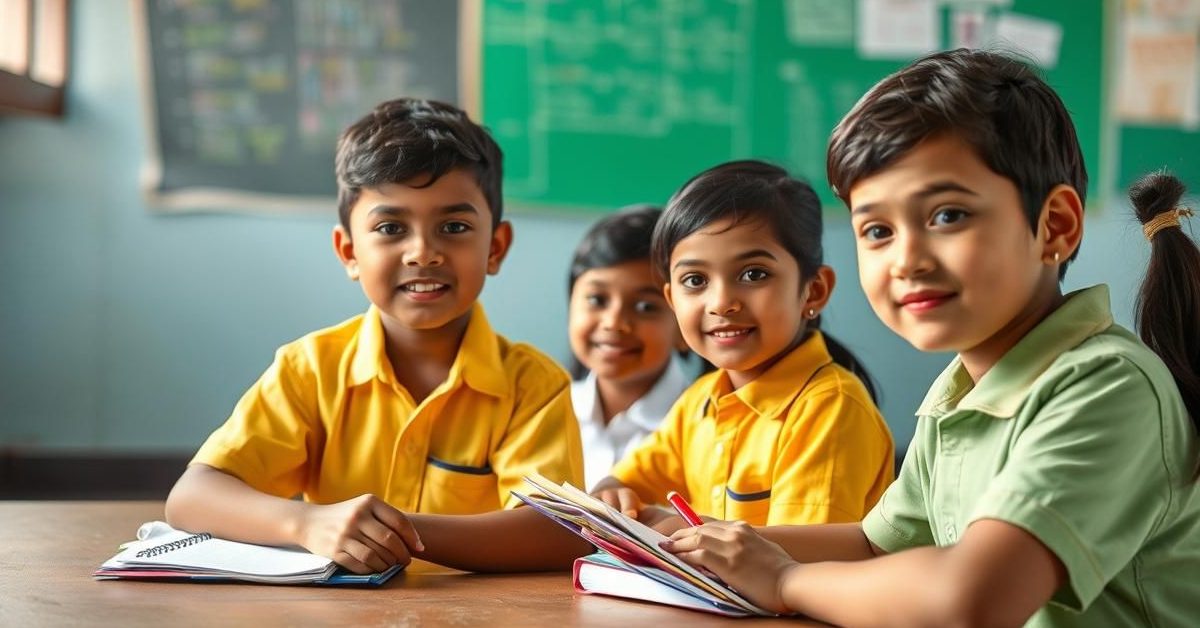A recent government survey reveals that learning levels for Class 3 students are still below pre-Covid standards, highlighting ongoing challenges in elementary education.
Understanding the Latest School Survey
The National Council of Educational Research and Training (NCERT) conducted the Parakh Rashtriya Sarvekshan 2024, assessing over 21 lakh students across Classes 3, 6, and 9. This comprehensive survey, previously known as the National Achievement Survey (NAS), provides a crucial snapshot of India’s school education system.
A key finding from the survey indicates that Class 3 students, particularly in language and mathematics, have not yet returned to their 2017 performance levels. While their scores improved compared to 2021 (the period immediately following pandemic disruptions), they remain lower than pre-Covid benchmarks.
The 2024 survey aligns with the National Education Policy (NEP) 2020, which defines different stages of school education. Class 3 marks the end of the foundational stage, Class 6 the preparatory stage, and Class 9 the middle stage. This alignment helps evaluate the effectiveness of the education system at these critical junctures.
Key Findings for Class 3 Students
In language, Class 3 students achieved a national average score of 64% in 2024. This is an improvement from 62% in 2021 but still falls short of the 66.7% recorded in 2017.
Similarly, in mathematics, the national average score was 60% in 2024, up from 57% in 2021, but below the 63% scored in 2017. Students showed particular difficulty with geometric shapes and money transactions, while performing best in identifying simple patterns.
Introducing PARAKH
PARAKH, which stands for Performance Assessment, Review and Analysis of Knowledge for Holistic Development, was established in 2023 as the National Assessment Centre. One of its core responsibilities is to organize these large-scale achievement surveys.
Spearheaded by NCERT and CBSE, PARAKH assesses student learning achievements from a sample of government, government-aided, and private schools across the country. It aims to provide a holistic view of learning outcomes.
Other Important Education Assessments
Beyond PARAKH, two other significant surveys provide different insights into India’s education landscape.
Annual Status of Education Report (ASER) 2024
Conducted by the NGO Pratham since 2005, the ASER report measures basic reading and arithmetic levels in rural school children. The 2024 report, released in January, highlighted positive trends.
It found significant increases in pre-primary enrollment and encouraging improvements in reading and arithmetic levels, recovering from Covid-19 learning losses. The survey also revealed that over 90% of rural adolescents now have smartphone access, and it assessed their digital literacy skills.
Notably, the basic reading levels for Class 3 children in government schools reached their highest point in 20 years, with 23.4% able to read a Class 2 textbook, up from 16.3% in 2022.
Foundational Literacy and Numeracy (FLN) Study
The NCERT conducted the FLN Study in 2022 as a one-time exercise to assess foundational skills. This followed the launch of the NIPUN Bharat mission in 2021, which aims for all children to achieve foundational literacy and numeracy by 2026-2027.
The study found that 37% of Class 3 students had “limited” foundational numeracy skills, while 11% lacked the most basic knowledge. In English literacy, 15% lacked basic skills and 30% had limited skills, underscoring areas needing targeted intervention.
- Class 3 learning levels in language and math are still below pre-Covid standards.
- PARAKH is the new name for the National Achievement Survey (NAS), aligned with NEP 2020 stages.
- ASER 2024 shows improved pre-primary enrollment, reading, and arithmetic in rural areas, plus increasing digital access.
- The FLN Study highlighted significant gaps in foundational literacy and numeracy for Class 3 students.
These surveys collectively offer a comprehensive look at the state of education in India, helping policymakers identify strengths and areas that require immediate attention to achieve the goal of a developed India.















